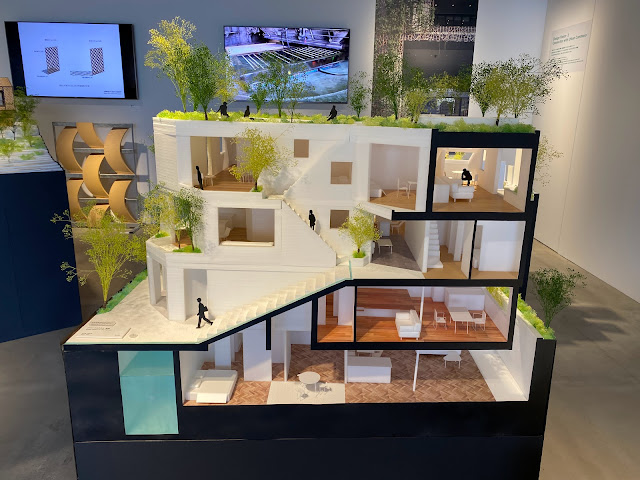私たちを取り巻く環境と建築の関係をテーマに、建築のあるべき形を模索している建築ユニット、末光弘和+末光陽子 / SUEP.による、ギャラリー間での展覧会。
3階のフロアは、外光の分析や、風の流れを考慮した建物のシミュレーションなど、建築というよりどこかの大学の建築科の研究発表会のような展示が多く、このギャラリーでのいつもの展示と違い、やや戸惑いを感じた。
4階のフロアでは、そうした研究の実践編といった趣の、実際の建築プロジェクトが模型屋写真、ビデオなどによって紹介されていた。
目先のデザインのユニークさや、伝統に基づいた建築などと違い、SUEP.の建築は一見するととても地味なものが多い。
しかし環境や持続性を意識した建築とは、SDGsなどが言われる現代の傾向には沿っていると言える一方で、本来の建築のあるべき姿であるように感じた。
An exhibition between galleries by Hirokazu Suemitsu + Yoko Suemitsu / SUEP.
On the 3rd floor, there are many exhibitions that are more like research presentations of some university's architecture department than architecture, such as the analysis of external light and the simulation of a building that considers the flow of wind. Unlike the exhibition, I felt a little bewildered.
On the 4th floor, actual architectural projects were introduced through model shop photographs, videos, etc., with the flavor of the practical version of such research.
Unlike architecture based on the uniqueness of immediate design or tradition, many of SUEP's architecture are very plain at first glance.
However, while it can be said that architecture that is conscious of the environment and sustainability is in line with modern trends such as the SDGs, I felt that it was the ideal form of architecture.








コメント
コメントを投稿